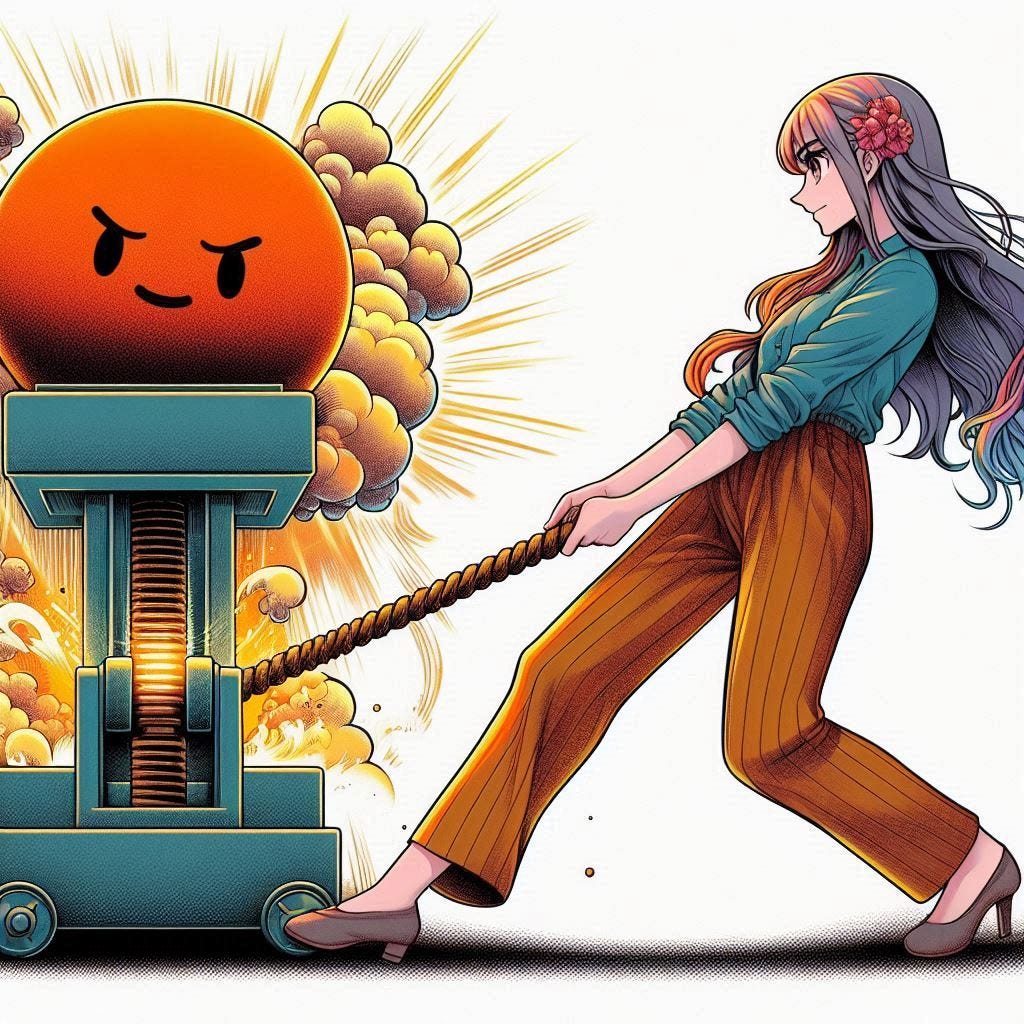Unleashing Change: 12 Leverage Points for Leaders to Focus On
An introduction to Donella Meadows 12 leverage points in a system for HR and leadership
In the previous blog we explored how the seemingly simple question of “Why did the chicken cross the road?” can teach us valuable lessons about interconnectedness and causality in our work environments. We delved into three key elements of systems thinking:
Stocks: The accumulations in a system, like employee headcount or critical skills.
Flows: The rates of change, such as new hires or resignations.
Delays: The time lags between actions and their effects, often overlooked but profoundly impactful.
Now that you can picture, imagine and even draw out the system. The next question is, how do you shift the outcome. As Edward Denning said
“Every system is perfectly designed to get the results it gets”
This is where Donella Meadows introduced “leverage points”. This is not like a 12 golden rules of, or an exact map of every system. But a heuristic that can guide your attention to certain areas. So what are leverage points?
Imagine you're trying to move a boulder. You could push against it with all your might, or you could use a lever to amplify your strength. In complex systems like organisations, economies, or ecosystems, leverage points are like those levers - places where a small shift can lead to big changes (non-linearity).
These range from the obvious but often ineffective to the subtle yet powerful. As leaders and HR practitioners, understanding these leverage points can help us navigate complexity and drive meaningful change. Let's explore them, starting from the least to the most effective:
12. Constants, parameters, numbers
Think of these as the dials and settings in a system. They're the most visible and often the first things we try to change, but they're usually the least effective. In an organisation, this might be adjusting salaries or changing performance metrics such as time to offer, number of promotions. or spans of control. While these can have some impact, they rarely lead to fundamental changes in the system's behaviour.
11. The sizes of buffers and stabilising stocks
Buffers, like inventory or cash reserves, can make a system more stable. Too high buffers can create slow responses and too low can create fragility. In HR, this might be our overall headcount that provides a buffer against spikes in attrition. Or single points of expertise making a system fragile.
10. The structure of material stocks and flows
This refers to the structure of the system. How do stocks flow through the system, and what nodes do they pass through. This might be a recruitment process for headcount, or a single person signing off all purchases. Where is flow either too constrained (slow decision making) or too fast (insufficient governance). While important, these are often slow and expensive to change.
9. The lengths of delays relative to system changes
Delays can cause oscillations in a system. If you had a 6 second delay between your steering wheel and wheels this would make driving impossible. This is also related to stocks and flows. A sudden resignation from a single key person, before they can be replaced (the system response) can be catastrophic. Shortening these delays can significantly improve system performance. Also increasing delays can be helpful. Checking the value of a stock each day can lead to over correction and wild oscillations of buying and selling.
8. The strength of negative feedback loops, relative to the impacts they are trying to correct.
These are the corrective mechanisms in a system. In HR, performance reviews or customer satisfaction surveys are examples. In our chicken crossing the road, the chickens being hit by cars is the feedback loop offsetting the hatching of new chickens. Strengthening these loops can help keep the system in check, but they need to be powerful enough relative to the changes they're trying to correct. Too small or delayed negative feedback loops relative to the behavioural change they are looking to achieve mean a stock can flow in a single direction. For example some attrition in a business is good. Insufficient performance management systems insufficiently control the stock of poor performance gained from the the inherent mismatch in hiring, potentially allowing poor performance to build up.
7. The gain around positive (self reinforcing) feedback loops
Positive loops amplify changes in a system. For example, growing populations lead to even more opportunity for re-production, leading to even faster growing populations. They can lead to growth or collapse. Think of how a company's success can attract more talent, leading to more success. Or how poor performance leads to poor leadership behaviours, leading to poorer performance, leading to poorer leadership behaviours. Managing these loops is crucial for sustainable growth. What is the correct level of feedback loops (negative and positive) to hold the system in optimal balance?
6. The structure of information flows
This is about who does and doesn't have access to information. Does the business development department know the capacity of the operations team? How far in advance is the operations team aware of large orders? If we are running “just in time” or other lean practices, with low stocks, improving information flows are key. Introducing new or changing existing information flows can lead to significant behavioural changes.
5. The rules of the system
These are the policies, incentives, and constraints that shape behaviour. For instance x% of margin on all sales will drive certain types of sales. Changing company policies or industry regulations fall here too. This is a high-leverage point, as new rules can swiftly alter system behaviour.
4. The power to add, change, evolve, or self-organise system structure
This is about flexibility, adaptability and as discussed in prior blogs the ability to self-organise (not centrally governed change). Do we have sufficient diversity in the system to respond to changes in the external environment. If companies chase maximal efficiency through ever deeper specialisation, they reduce their degrees of freedom to respond to changes in the external environment. This is what is called operating “at the edge of chaos”. Like in the brain, are knowledge structures in the organisation softly assembled, or like most, too rigidly assembled in silo’s. Organisations that can locally restructure themselves in response to challenges are more resilient. Fostering a culture of innovation and continuous improvement taps into this leverage point.
3. The goals of the system
The purpose or function of the system is a powerful leverage point. This is more than the rules, but the assumptions of direction that underpin those rules. For instance a charity might still seek positive profit, but only to reinvest in its purpose instead of dividends or share buy-backs. Is the goal of the HR function to build the best teams or win a seat at the table? Changing an organisation's mission or strategic objectives can redirect the entire system. This is why visionary leadership can be so transformative.
2. The assumed beliefs or paradigm out of which the system arises
This is about the shared ideas and implicit assumptions that shape the system. Are businesses there to serve distant shareholders or the community in which they operate in? Is HR a support function or an equal business partner? Changing these can lead to profound shifts. For instance, moving from a shareholder-centric to a stakeholder-centric view of business can revolutionise how a company operates. Moving from a support function to a equal business partner belief can shift the function from pleasing “the business” to performing as the business.
1. The power to transcend paradigms
The highest leverage point is the ability to step outside current paradigms altogether. That either being a stakeholder or shareholder, a support function or equal business partner function are both limiting concepts. It's about remaining flexible in our thinking, recognising that all models and beliefs are limited. This level of intervention can lead to radical innovations and transformations.
As HR practitioners and leaders, we often focus on the more tangible, lower-leverage points like adjusting parameters or changing structures. However, the real power lies in the higher leverage points - shaping information flows, redefining goals, and challenging paradigms.
Understanding these leverage points doesn't make changing complex systems easy. Most organisational systems are designed to be robust, they are often far from the edge of chaos. This post is not about making change easier, but illuminating where short term illusionary change and long term sustained change can be found. It reminds us to look beyond the obvious and consider deeper interventions. Sometimes, the most powerful change comes not from pushing harder on a smaller lever, but from pushing softly on the right lever.
In a world of increasing complexity, the ability to identify and use these leverage points effectively is becoming a crucial skill for leaders. It's not just about managing what exists, but about imagining and creating what could be.
So, the next time you're faced with a challenging system, ask yourself: Where are the real leverage points, and how can I use or influence them to create meaningful change?





